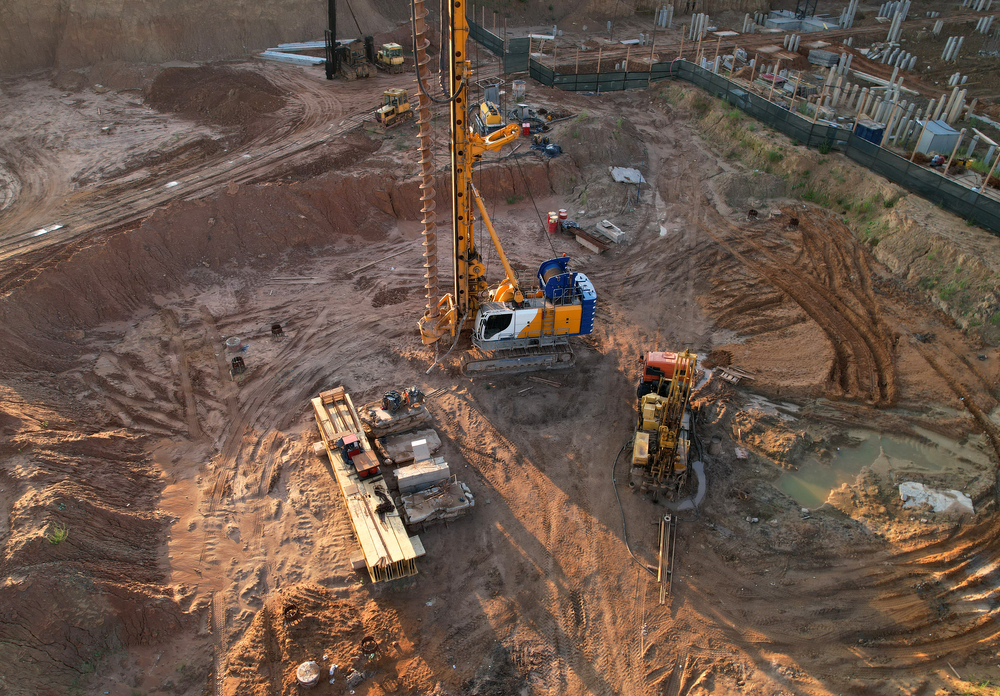The Best Guide To Geotheta
The Best Guide To Geotheta
Blog Article
How Geotheta can Save You Time, Stress, and Money.
Table of ContentsThe Single Strategy To Use For GeothetaUnknown Facts About GeothetaRumored Buzz on GeothetaSome Of Geotheta
They work together with civil engineers, structural designers, engineers, and various other specialists to incorporate geotechnical factors to consider into the total project style and building process. This requires reliable teamwork, sychronisation, and communication to ensure that the geotechnical aspects straighten with the job objectives and meet governing needs.Mining & Products Engineering: Concepts of exploration, infiltration prices, and aspects impacting the choice of drilling approach. Features of dynamites, firing systems and blast patterns. Blowing up methods in surface and below ground functions. Special blowing up strategies at excavation borders. Vibration and noise control. Mechanical and continuous strategies to fragmentation, including longwall shearing and fullface boring.
Modelling of fragment and particle dimension distributions; comminution as a transfer function. Comminution technology: squashing, grinding, size category. Integrated analysis of fragmentation and comminution procedures. Used by: Mining & Products Engineering.
Geotheta Things To Know Before You Get This
Bachelor's level programs in civil, geotechnical, geological, and ecological design usually last 4 years and include basic education and learning training courses in English, social science, and the humanities, as well as training courses in innovative maths, structural geology, and liquid mineralogy. (https://www.edocr.com/v/p4pabymp/ianhammond2191/geotheta)
Geotechnical design entails the evaluation of the dirt and rock conditions at a certain site, and their effects for the advancement of that site. As most structures rely on the ground for assistance, it is without surprise that an in-depth understanding of the ground conditions, and the suitability of structure systems, are vital to the long-lasting security and efficiency of the building or framework.
Specialising in the investigation of geological developments and ground behaviour, geotechnical engineers carry out clinical examinations and testing to comprehend the effect these geological formations may carry the design and building of structure, civil and infrastructure projects. This knowledge is critical for the layout and construction of buildings, roads, tunnels, dams, bridges, and water supply and sewage systems.
The geotechnical team at Douglas Allies consistently seek advice from architects, layout engineers, designers, and contractors to make suggestions on style and advancement proposals to guarantee that the constructed frameworks are appropriately developed for the ground conditions. The layout of footing systems requires to consider the weight of the framework, the ability of the ground to support that weight together with movement tolerances and efficient building.
See This Report about Geotheta
This task is significantly streamlined by the use our Douglas Map geospatial system that makes this info conveniently accessible in a simple to use web browser interface. A geotechnical designer will certainly guide the boring of boreholes and test pits to gather dirt and various other samples, and additionally examine surface area functions and ground exposures to form a geotechnical model of the subsurface conditions.
Relying on the job type and ground problems experienced, research laboratory screening might among other things examine strength, compressibility, sensitivity Resources and/or permeability of dirt and rock examples. After this data is gathered and collated, the outcomes are made use of for a geotechnical model of the site, which is usually offered as areas across the website.

A geotechnical investigation by nature can only evaluate the ground problems at the areas drilled or excavated. All-natural variations in dirt and rock problems can happen across a website and in between examination locations. It is as a result good method that the geotechnical designer be kept throughout construction of the job to give on-site verification that the ground conditions encountered follow the assumptions and suggestions given in the geotechnical examination record.
What Does Geotheta Do?
Geotechnical engineers use their in-depth knowledge of soil and rock to assess risk and address problems on varied infrastructure projectsGeotechnical design is a specialist branch of civil engineering which looks at the practices of planet materials and the application of dirt and rock auto mechanics. Tailings Engineer. As a geotechnical engineer, you will certainly evaluate the physical, mechanical and chemical residential or commercial properties of dirt and rock in order to create foundations, preserving structures and earthworks
Geotechnical design is closely connected to and overlaps with, both engineering geology and ground design - https://www.abnewswire.com/companyname/geotheta.com_139529.html#detail-tab. It's possible to specialise in geotechnics or help a geotechnical firm but be referred to as an engineering geologist or a ground engineer. As a geotechnical designer, you'll need to: construct and preserve relationships with clients and various other specialists entailed in the website, throughout each projectmaintain security standards on website be mindful of cost effects when you make recommendationsstudy geological maps and aerial photographs from an array of resources and from different time periodsexamine construction plans to see how feasible they are based upon your understanding of the siteinvestigate threats or geological dangers for the sitesearch for ecologically sensitive attributes, such as garbage dump beginning to establish accurate and expository ground modelsplan field investigationsdrill and analyse samples of bedrock, dirt, groundwater and additional materials monitor other experts on sitesolve technical problems as they develop, such as unforeseen structures at drill sitesmonitor problems during and after construction to make certain frameworks are stable in the short and long termadding data accumulated on site to your preliminary researchcreating geotechnical calculations, drawings, and 2 or three-dimensional computer designs analyzing the datamaking suggestions regarding the suggested usage of the website

Report this page